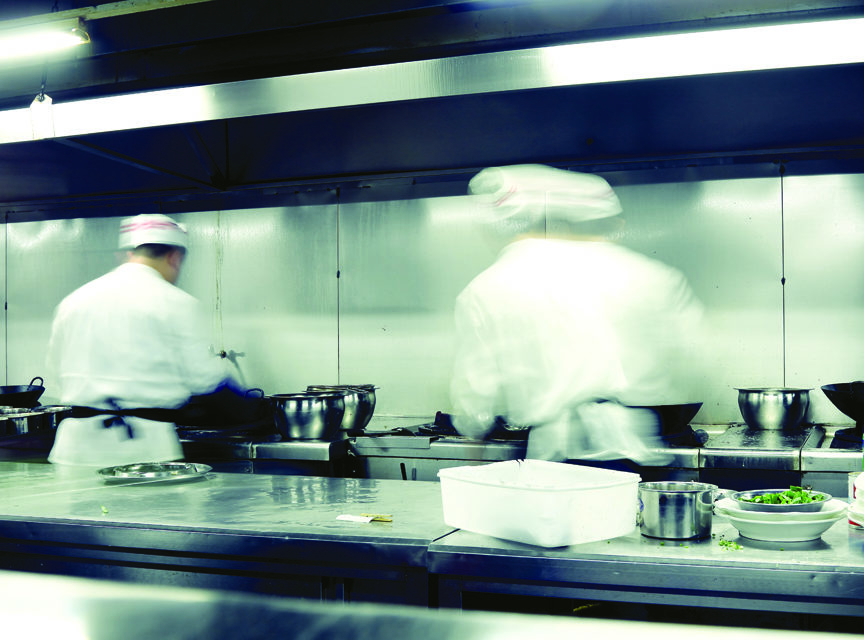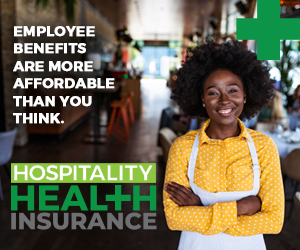By Alec Northrop, Contributing Writer
The Iron Horse restaurant opened in Pioneer Square in 1971 and operated without traditional wait staff for 29 years before closing its doors, citing rising rents in Seattle. It was way ahead of its time.
The Iron Horse famously brought food to your table on a train. It was an impractical, but fun method of food delivery for a different era. Now a new generation of restaurateurs are turning to the practicality of ghost kitchens, and in a nation where people have less time to do things like eat, people don’t care how fun they are.
What does a ghost kitchen look like?
The concept of a ghost kitchen is simple: One kitchen prepares food to sell under different brand names. However, the iterations of this simple concept are endless. Some ghost kitchens sell different styles of food but operate under the same owner while others charge established restaurants to use their space. Some kitchens have limited seating inside for dine-in customers, while others only deliver. While there are many variations of a ghost kitchen, getting the food from the kitchen to your home is the most important piece of the puzzle, and the ghost kitchen capitalizes on the shift to third-party delivery by giving businesses the ability to be flexible with their image.
Many ghost kitchens stay true to their name, creating a brand that matches the food they deliver while keeping their operations out of the public eye. However, one of the largest players, Kitchen United, lets customers know exactly what is going on. Kitchen United, backed by investment money from Google, has a location in LA with one kitchen and 10 restaurants. Essentially an upscale food court that shares a kitchen, customers can dine-in where they order food on touch screen kiosks and clean up after themselves. The company only has to employ its chefs and delivery drivers who can be employed by a number of third parties.
Trending positively: The climate creating the conditions for a ghost kitchen
It’s well known that third-party delivery is on the rise. The National Restaurant Association recently released a report that found that 50% of millennials are more likely to have restaurant food delivered to them than two years ago, while the majority of millennials and adult women say they are too busy commuting to and from work to do things like go to a restaurant.
These trends have led to an explosion in third-party delivery and added viability to the ghost kitchen concept. After all, the ghost kitchen has been tried before and it has failed. Two of the largest issues facing the industry were brand recognition and the additional hurdle of delivery operations. Previous ghost kitchens like Sprig and SpoonRocket offered niche cuisine and guaranteed delivery times, but marketing proved difficult without a storefront and perfecting delivery is no small feat. Both of those problems are solved with third party delivery; people find you on their Uber Eats app, and then Uber delivers the food. The restaurateur has nothing to focus on besides making delicious food.
“I think they (third-party delivery services) will continue to grow, however I also see some of the larger providers take over the market and we may see three or four large players in the market and the rest will either close or go out of business, since it is so costly to maintain this type of delivery service, unless you have a large delivery infrastructure such as Uber or Amazon,” said Taylor Hoang, owner of Pho Cyclo. “The bad news for restaurateurs is they have less option to choose which party to participate with and the already high fees may go up as a result.”
One of the reasons ghost kitchens are becoming successful is that we are in the midst of a shift in culinary culture. Food critics have increasingly based their reviews on the atmosphere in a restaurant to the point that the taste of a meal seems to be the least important factor in a restaurant’s quest for a Michelin star. The trend is beginning to shift as more people willfully order a $25 meal to be delivered to their home. While it seems counterintuitive, ghost kitchens offer a way for talented chefs to enter the market without having to worry about the logistics of everything that comes with operating a traditional restaurant.
What can this look like in Washington?
In places like Seattle, where labor costs and rent are increasing simultaneously, ghost kitchens could be a savior. Picture a popular, established cafe that has recently started losing money when razor-thin margins were cut further by rises in rent, food costs and minimum wage. That restaurant can do very little to flip a switch and become profitable. As a longstanding staple of the community, they can’t market their way out of the hole and increase their brand awareness, and they can’t cut costs any further than they already have. Ghost kitchens give them a wealth of additional options. The restaurant could rent out its kitchen at night to a local catering company for meal prep.
Some restaurants may have thought third-party delivery could be their saving grace, only to find that the vendor fees or increased kitchen traffic didn’t fit with their model. The additional benefit of having a ghost kitchen is that you can start fresh and offer your food at whatever price you’d like. Logistically, it adds very little to the model of third-party delivery: The kitchen makes the food, and a driver comes to pick it up. The way the ghost kitchen concept differs is in its online presence. The driver will have to come to your store, but the trick is that the customer doesn’t associate the food with the kitchen it was made in, they only know what they’ve seen on their app and on your website.
Ghost kitchens are a great way to utilize retail space in commercial spaces that have been vacant. Multiple restaurants with different owners can cost-share by using the same kitchens. Seattle businesses have been a pioneer in this area as downtown businesses have been renting their kitchens out to catering companies and the likes for years. Once you get past the idea of having one address per brand, you open your business up to a new group of consumers.
In short, ghost kitchens are exciting because they are bringing new possibilities to an industry that rarely sees drastic operational change. Ghost kitchens may prove to be the most important development the industry has seen in decades and we’ll be keeping our eye on them. Savvy restaurant owners should do the same.



















![Webinar replay! [Ask a Lawyer] Best hiring practices](https://wahospitality.org/wp-content/uploads/2024/05/CatherineHiring-webinar-150x150.png)









